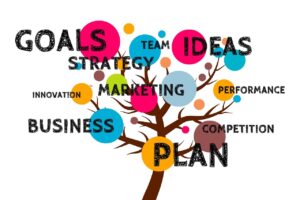
The core intention of running any business is ‘business continuity’.
What if this core idea becomes a question? That’s today’s most burning topic everywhere, especially in the IT industry!
The IT industry has seen some significant advancements in recent times. But the concern of business continuity continues to haunt every IT firm.
And, the answer is ‘Business Continuity Management (BCM)’!
Defining BCM
Business Continuity Management (BCM) basically refers to an organization’s advanced preparedness and readiness to maintain business continuity or ensure quick recovery, in case of a disaster scenario.
It also involves preparedness in tackling potential risks and unexpected incidents such as natural disasters, server downtimes, and cyberattacks.
Business Continuity Management Framework
A successful BCM strategy is backed by a well-defined framework, which includes:
- Policies and Strategies
Given the sensitive nature of a disaster incident, it’s imperative for organizations to keep a close watch on policies and procedures. Policies ideally define the scope of the program, key parties involved and management structure, thus establishing the need for governance in ensuring business continuity. End-to-end of the process, organizations should be clear about what’s being covered in the business continuity plan. Is it about safeguarding applications or keeping them operational, ensuring data accessibility, focusing on revenue-generating areas or external-facing components or any critical aspect of the organization? All these need careful observation!
- Business Impact Assessment
This is the phase where organizations should think of data very seriously. That includes assessment of collection, access and acceptable downtime for which the data can be left unavailable, etc. We should also think about the Recovery Time Objective (RTO) for application restore and Recovery Point Objective (RPO) that determines customer acceptability about data and its ability to support the company’s operations.
- Risk Assessment
Identify possible potential threats to your organization. This can be the assessment of personnel loss, changing end-user preferences, internal capabilities to face risks, non-compliance, and financial volatility. Post risk assessment, the focus moves onto the risk tolerance factor, the priority of resolving issues, identifying potential solutions. This should be a continuous process to avoid future risks.
- Validation and Testing
All the potential risks and their possible impacts need continuous monitoring, measurement, and testing. Post designing the risk reduction plans, another round of assessment is to be done on such plans to ensure their effective functioning.
- Incident Identification
Defining the risk is very important in achieving business continuity. These risk events should be mentioned clearly in policy documents to trigger timely actions in case of an incident. These actions should ideally prompt the initiation of the business continuity plan and bring relevant teams into action.
Conclusion
The aforementioned five steps help you build an effective Business Continuity Management Framework that suits your organization.













Business continuity management (BCM) is a comprehensive program that enables an organization to protect its operations, maintain the continuity of critical business functions, and ensure quick recovery in the event of a disaster or disruption. The goal of BCM is to create an effective and resilient business strategy that can help an organization survive, recover, and thrive in the face of any potential disruption. BCM includes strategies, processes, and procedures for identifying and addressing potential risks to the organization’s operations, as well as plans for effective and timely recovery of operations. BCM involves a range of processes and activities, from cloud computing developing disaster recovery plans to training employees on disaster response and recovery procedures. It also involves developing and testing IT system backups, setting up offsite data storage, and establishing business continuity plans. BCM helps organizations prepare for and respond to the unexpected, ensuring that its operations can continue with minimal disruption.